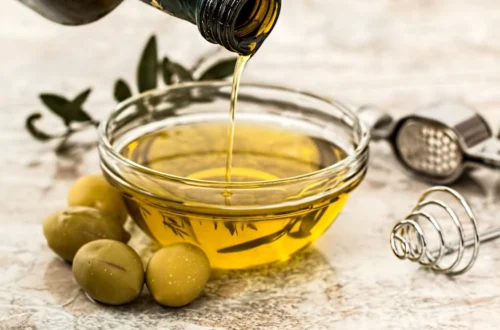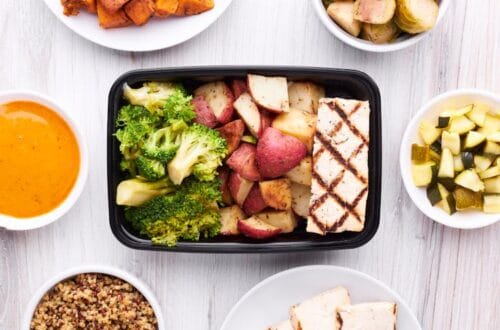
8 HEALTHY FRUITS YOU MUST TRY THIS SUMMER | SUMMER FRUITS | GLOW REGIME
8 HEALTHY FRUITS YOU MUST TRY THIS SUMMER | GLOW REGIME
It’s summer and time for wandering. But, what about your health? It suffers the most. During these summer days you lose lot of water through sweating and urination. This leads to dehydration. The main symptom of dehydration is extreme thirst. Overexposure to sun’s ultraviolet rays leads to skin infections (Sunburn). It can be noted through severely reddened, swollen skin and pain.
1. DEHYDRATION :
2. SUN STROKE :
If the temperature soars beyond 40 degrees or celsius, you need to be very wary of the threat of sunstroke. This is actually categorized as a health emergency. Exposure to heat for a long stretch of time in conjunction with dehydration mess es with the body’s ability to regulate internal temperature. This triggers sunstroke, which can damage your brain cells and be lethal.
You can foretell the onset of sunstroke from these symptoms
- Piercing headache
- Dizziness
- Muscle cramps
- Seizures
- Elevated heart rate
To avert sunstroke, drink plenty of fluids, unfurl your umbrella when you step outside, avoid going out between 12 noon and 3 PM and wear comfortable cotton clothing.
3. HAY FEVER :
Hay fever is a kind of allergy. When your body’s immunity cannot fight off foreign bodies that enter it, you break out in allergies. It is especially prevalent in early summer when flowers bloom and the pollen comes in contact with your body. Some indicators of hay fever areCongested nose and watering eyes. Coughing and snee Fatigue and fever. zing. You can reduce your exposure to allergens if you wear a pollution mask. If you are prone to allergies, consult with your doctor, some medicines can ease the symptoms.
4. HEAT STROKE :
Heat stroke or hyperthermia is a common summer disease that results from prolonged exposure to high temperatures. It is preceded by signs of heat exhaustion like headaches, dizziness and weakness. One tip for treating Hyperthermia is by outside cooling of the body with the help of water, cold air or ice packs.
5. SUNBURNS :
When you expose yourself to the sun for an extended duration, the harmful ultraviolet rays (UVA, UVB) can penetrate your delicate skin leading to a condition called sunburns. This condition is characterised by itchy, dry and red skin that can be accompanied by nausea, fever or chills. In cases where the burns are severe, there may be blisters and the skin may peel once the condition subsides.
HOW FRUITS HELP TO RECHARGE YOURSELF ?
Summer fruits provide an instant boost of energy and help reduce tiredness and fatigue, something many of us experience during the summer season. They will keep your system hydrated and cool you down. Most of summer’s fruits are bursting with antioxidants and phytochemicals ( plant chemicals, many of which are thought to have a protective effect against cancer) as well as vitamins, minerals, and fiber. A rule of thumb for fruits and vegetables is, in general, the brighter the color, the more nutrients. So you can imagine how summer fruits such as blueberries, red grapes, strawberries, mangos, and boysenberries score on the nutrition index.
GRAPES :
Both red and green grapes contain ellagic acid. Red grapes also have the newly discovered phytochemical resveratrol.
1 cup of red flame grapes has,
- 13% of the RDA
- 11% of the B6
- 29% for vitamin C
- 14% for vitamin E
- 28% for selenium.
A cup of Thompson seedless grapes has,
- 14% of the RDA for vitamin B and vitamin E
- 28% of selenium.
They are high in antioxidants and are a rich source of potassium. Include grapes in your diet if you have high cholesterol or blood sugar. Grapes will keep your heart healthy. They are good for the knees and boost immunuity. Grapes also prevent many viral infections and prevent eye degeneration. They cure indigestion and help fight breast cancer.
WATERMELON:
As its name implies, this fruit is a hydration hero, and fluids are exactly what you need when the heat is on. Watermelon’s high water content keeps you cool and hydrated.
As an added summer bonus, watermelon also contains
- lycopene, which protects skin cells from sun damage.
- vitamin A (which is important for eye health and boosts immunity)
- vitamin C (which strengthens the immune system).
- vitamin B6 (which also helps the immune system).
- potassium, a mineral necessary for water balance (and preventing muscle cramps) that also helps keep your heart healthy.
ICE APPLE :
Ice apple (palm fruit) is a seasonal fruit of the sugar palm tree and is widely available during the sizzling summer. The fleshy fruit loaded with translucent, juicy fluid has excellent cooling properties Ice apple is very similar to litchi fruit in texture and tastes like a slightly sweet tender coconut. It provides the perfect blend of minerals and sugars for the body during the summe season.
Ice apple is a lowcalorie fruit providing,
- 43 calories per 100 grams
- 11 grams of carbohydrates and rich in calcium and phytonutrients.
- minimal amount of fibre, protein
- vitamin C, A, E, K, B7 and iron which confers you with a host of healing health benefits.
MUSKMELON :
Like other melons, muskmelon is also known for its high water content. Which means that it will help you in preventing dehydration, but being packed with water content doesn’t imply that they’re short on other nutritional benefits. And don’t worry about the taste, for these are also aromatic and delicious unlike other healthier foods. Having said that, muskmelon seeds too have health benefits if consumed in the right way.
100 grams of muskmelon contains,
- Calories – 34
- Dietary fiber – 0.9 gram
- Fat – 0.19 gram
- Protein – 0.84 gram
- Carbohydrates – 8.6 grams
MANGO :
There are so many people out there who love summers just because of mangoes. Mangoes, though high in calories, are a rich source of nutrients. There are reasons why mangoes are known as the ‘king of fruits’. This fruit is enriched with fibre and has as many as 20 minerals and vitamins. Fibre helps with digestion and helps keep you full. Mangoes are rich in Vitamin A and C, and also potassium. Also, zeaxanthin, a pigment present in mangoes, protects the eyes by filtering out harmful blue rays. Mango fruits have more than 20 vitamins and minerals and lots of fiber (which helps you stay full and is essential for good digestion).
Mangoes can help, fight heat stroke, Boost the immune system, control blood sugar, help prevent cancer, improve eye health and ward off heart disease.
- Calories: 83 for 100g
- Protein: 1 gram
- Carbohydrate: 22 gram
- Fiber: 2.3 gram
- Vitamin C: 78.9 mg (making it an excellent source)
- Folate: 29.7 microgram
LEMONS :
Lemons (Citrus limon) are among the world’s most popular citrus fruits. There are many ways to enjoy lemons, but they taste very sour and are usually not eaten alone o whole fruit. Instead, they’re often a garnish with meals, and their juice is often used to provide a sour flavor. They are a key ingredient in lemonade. These yellow fruits also have many potential health benefits. Eating lemons may lower your risk of heart disease, cancer, and kidney stones.
- Calories: 29 for 100g
- Water: 89%
- Protein: 1.1 grams
- Carbs: 9.3 grams
- Sugar: 2.5 grams
- Fiber: 2.8 grams
- Fat: 0.3 grams
PAPAYA :
Another great fruit that you can eat during summers is papaya. You can eat this fruit dried, ripe or unripe. Papayas contain nutrients like Vitamin A and C, folate, and various phytochemicals. This fruit is a all rounder, you can either eat it or apply its paste on your skin. Papaya has a lot of health benifits and works great on your skin tan. This fruit also contains papain, a compound that is good for your gastrointestinal health.
- Calories: 119 for 200 grams
- Protein: 1.3 grams
- Carbohydrates: 30 grams
- Fat: 1 gram
- Fibre: 4.7 grams
- Sugar: 21.58 grams
GUAVA :
Guava is a magic fruit when it comes to building your immunity with vitamin C. The intresting part about this fruit is that you can enjoy it along with itts seeds. It has a lot of fibre content and can be a boon for you if you have constipation. Even guava leaves have antibacterial properties that reduce the growth of bacteria and are often used to treat coughs and swollen gums, plus act as an anti-viral agent to prevent an infection.
- Calories: 68 for 100 grams
- Carbohydrate: 14 grams
- Fibre: 5 grams
- Protein: 2.6 grams
- Potassium: 417 mg
- Vitamin C: 228.3mg
- Vitamin B6: 5% of RDA
- Vitamin B9: 12% of RDA
A BONUS TIP FOR THIS SUMMER :
















